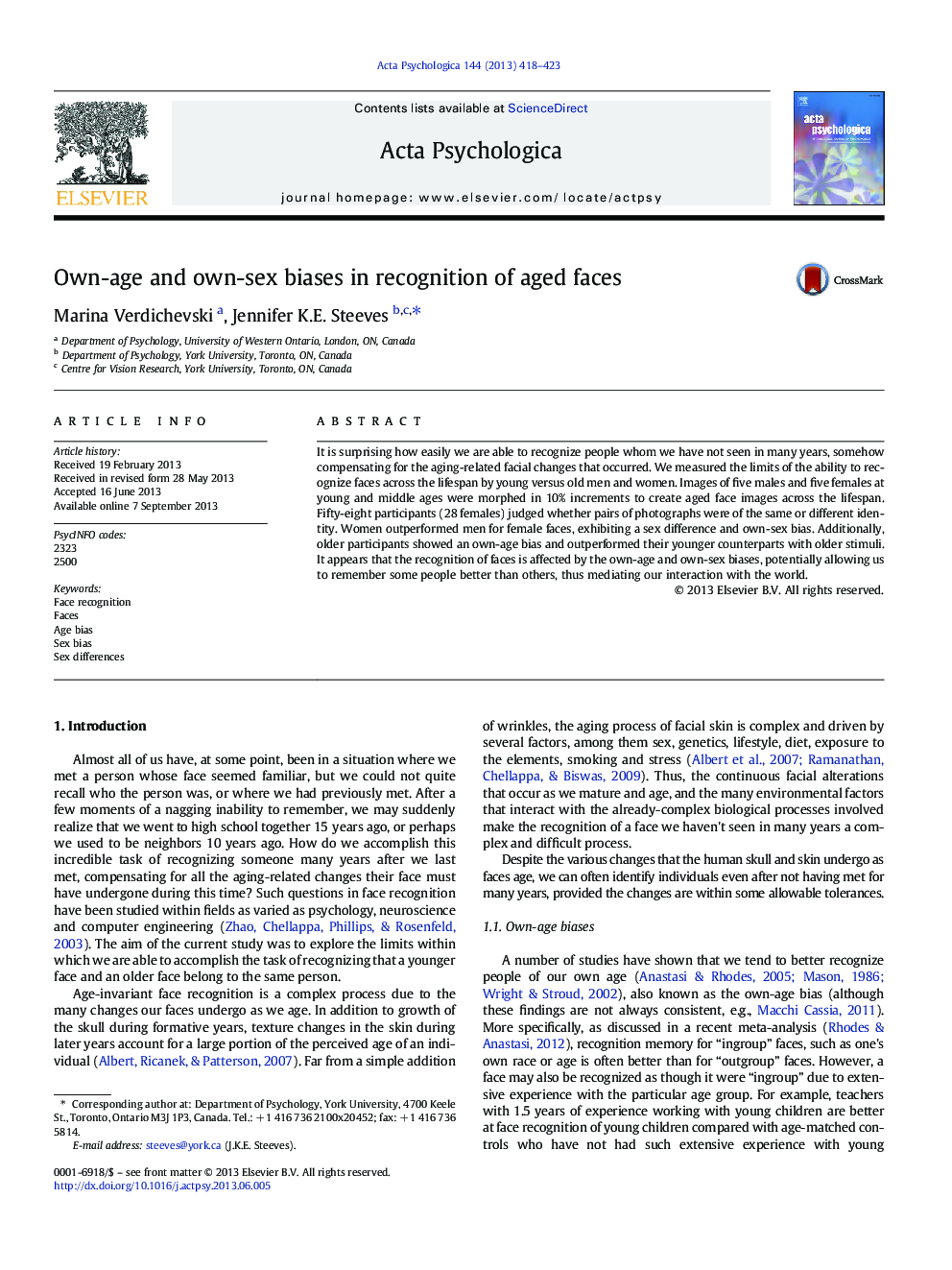| Article ID | Journal | Published Year | Pages | File Type |
|---|---|---|---|---|
| 10453789 | Acta Psychologica | 2013 | 6 Pages |
Abstract
It is surprising how easily we are able to recognize people whom we have not seen in many years, somehow compensating for the aging-related facial changes that occurred. We measured the limits of the ability to recognize faces across the lifespan by young versus old men and women. Images of five males and five females at young and middle ages were morphed in 10% increments to create aged face images across the lifespan. Fifty-eight participants (28 females) judged whether pairs of photographs were of the same or different identity. Women outperformed men for female faces, exhibiting a sex difference and own-sex bias. Additionally, older participants showed an own-age bias and outperformed their younger counterparts with older stimuli. It appears that the recognition of faces is affected by the own-age and own-sex biases, potentially allowing us to remember some people better than others, thus mediating our interaction with the world.
Related Topics
Life Sciences
Neuroscience
Cognitive Neuroscience
Authors
Marina Verdichevski, Jennifer K.E. Steeves,
